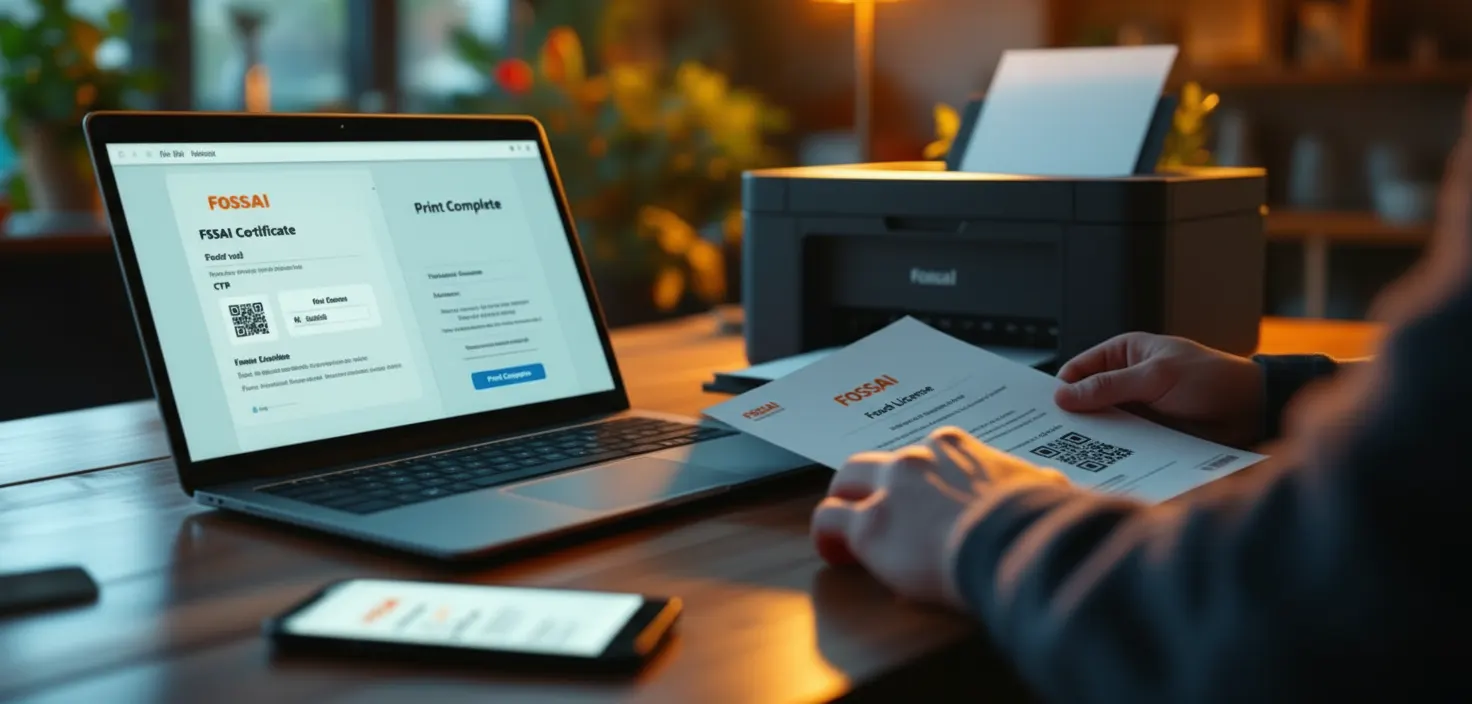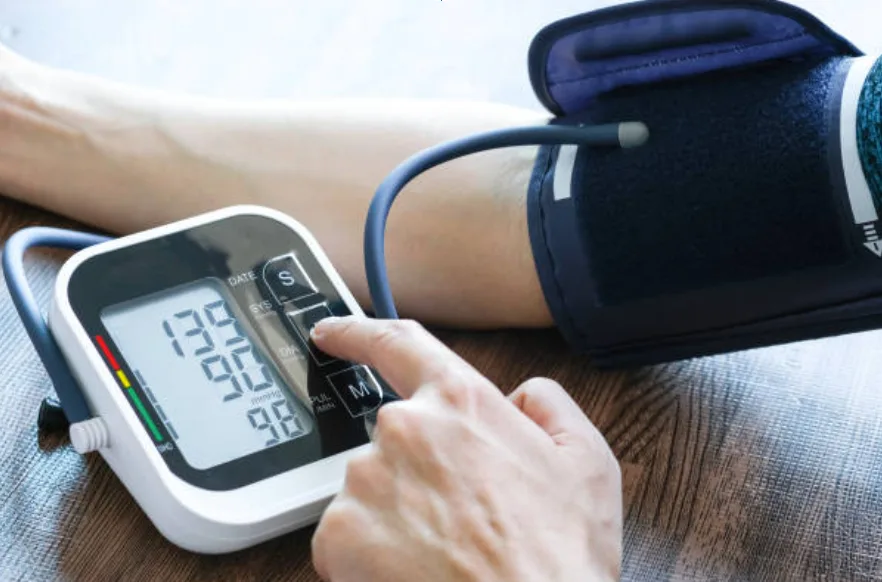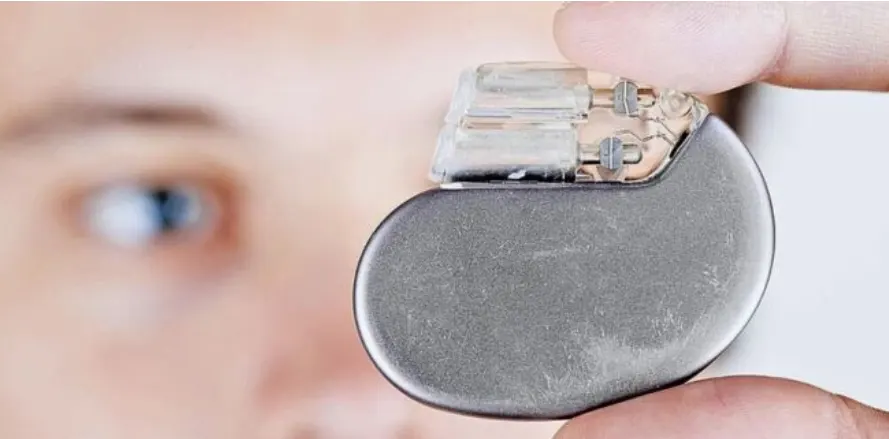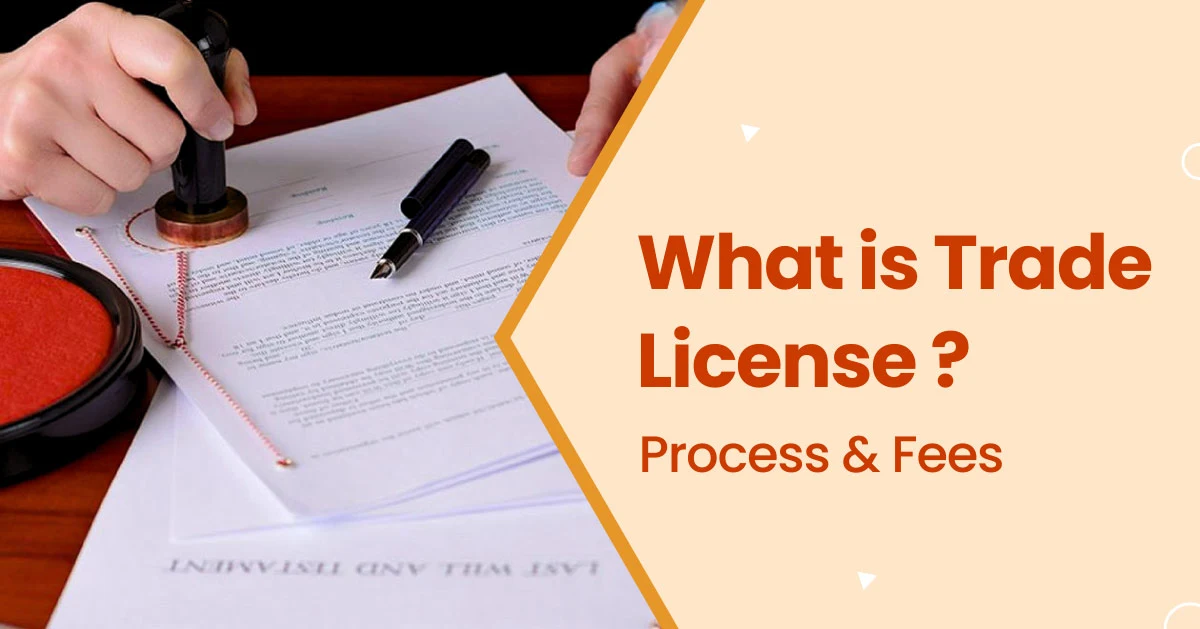
The Central Drugs Standard Control Organization (CDSCO) is India’s national regulatory authority for medical devices, operating under the Ministry of Health and Family Welfare. The CDSCO ensures that all medical devices manufactured, imported, or sold in India are safe, effective, and of high quality.
A “medical device,” as defined under the 2020 notification, includes instruments, software, implants, or apparatus used for the diagnosis, prevention, monitoring, or treatment of diseases or medical conditions.
Compliance with these guidelines is essential not only to follow the law but also to obtain CDSCO registration, gain legal market access, prevent product recalls, and avoid penalties.
This guide provides a comprehensive overview of CDSCO guidelines for medical devices in India, covering the risk-based regulatory framework, licensing and registration requirements, compliance procedures, required documentation, and the responsibilities of all stakeholders in the medical device industry.
What is the Legal & Regulatory Framework Governing Medical Devices?
This section outlines the legal framework that governs medical device regulation in India, from its historical roots to the modern, risk-based system.
1. The Drugs & Cosmetics Act, 1940 & Rules, 1945
For decades, India regulated medical devices as a sub-category of ‘drugs’ under the Drugs & Cosmetics Act, 1940, and its rules, a framework inadequate for the complex nature of medical devices.
- Initial Regulation: The Act’s definition of “drug” was broad enough to include devices that the central government had formally “notified” for regulation.
- The Problem: Few devices (e.g., condoms, cardiac stents) were regulated, while many high-risk devices like pacemakers and ventilators remained unregulated, creating safety gaps.
A new regulatory framework was introduced specifically to address the complexities of medical devices.
2. Medical Devices Rules, 2017
The Medical Devices Rules, 2017, effective from January 1, 2018, created a separate, comprehensive framework for medical devices, aligning India’s regulations with global standards.
Key Features under CDSCO Guidelines for Medical Devices Facility:
a. Risk-Based Classification: Devices fall into four classes (A–D) based on use and risk; higher-risk devices face stricter scrutiny.
b. Quality Management System (QMS): Manufacturers and importers must maintain a QMS per ISO 13485:2016.
c. Perpetual Licenses: Licenses remain valid indefinitely with timely retention fees every five years and regulatory compliance. The retention fees are:
- Manufacturing License:
- Class A & B: ₹5,000 per site + ₹500 per device
- Class C & D: ₹50,000 per site + ₹1,000 per device
- Class A & B: ₹5,000 per site + ₹500 per device
- Import License:
- Class A: ₹1,000 per site + ₹50 per device
- Class B: ₹2,000 per site + ₹1,000 per device
- Class C & D: ₹3,000 per site + ₹1,500 per device
- Class A: ₹1,000 per site + ₹50 per device
Note: Fees are subject to change; always refer to the latest CDSCO notifications for current rates.
d. Audits and Inspections: CDSCO and designated “Notified Bodies” conduct audits of manufacturing facilities to ensure compliance.
3. Notified vs. Non-notified Devices
Previously, only a few ‘notified’ devices were regulated. CDSCO now enforces compliance for all devices, eliminating this distinction.
- Before 2017: Regulatory control covered only a small list of “notified” devices; all others were essentially unregulated.
- The Transition: From 2020, the government began a phased rollout to register and license all devices under the Medical Devices Rules, 2017, with specific deadlines per risk class.
- Current Status: All medical devices in India will eventually follow the new rules, making the old “notified” vs. “non-notified” distinction obsolete.
How Does the CDSCO Online Portal Facilitate Compliance?
The CDSCO Sugam portal is the e-governance backbone of the medical device regulatory system. It is a mandatory, single-window online platform for all regulatory interactions with the CDSCO.
| Key Functionality | Benefit to Stakeholders |
| Online Application Submission | Allows for the submission of all applications (e.g., for import licenses, manufacturing licenses) and required documents electronically, eliminating physical paperwork. |
| Real-time Status Tracking | Provides applicants with the ability to monitor the progress of their application from submission to approval, increasing transparency and predictability. |
| Centralized Document Management | Serves as a secure repository for all regulatory filings and correspondence. |
| Online Fee Payment | Facilitates secure and efficient payment of all application and retention fees. |
Note: The CDSCO has been fully enforcing registration of all medical devices since October 1, 2023, for Class C and D devices, and from October 1, 2022, for Class A and B.
How are Medical Devices Classified in India Under CDSCO Guidelines?
As described earlier, CDSCO guidelines for medical device facilities in India are based on a risk-based approach, which determines the level of regulatory scrutiny required. The Medical Devices Rules, 2017, align with international standards and ensure patient safety while streamlining market access.
Risk-based Classes: A, B, C, D
Authorities categorize medical devices into four classes, increasing the regulatory burden from Class A to Class D.
- Class A (Low Risk): These are devices that present minimal risk to the user. They are subject to the least amount of regulatory oversight.
- Examples: Examination gloves, adhesive bandages, thermometers, and some surgical instruments.

- Class B (Low-Moderate Risk): These devices have a higher potential risk than Class A devices and require more stringent controls to ensure their safety and effectiveness.
- Examples: Hypodermic needles, suction equipment, and blood pressure monitoring devices.

- Class C (Moderate-High Risk): These devices carry a significant potential risk and are often implanted or used for life support.
- Examples: Bone plates, powered wheelchairs, and infusion pumps.
- Class D (High Risk): These are the highest-risk devices. They are typically life-sustaining, life-supporting, or have a significant potential for causing serious injury or death.
- Examples: Heart valves, implantable pacemakers, and ventilators.

Special Types of Medical Devices
The classification of certain devices requires special consideration based on their unique characteristics or function:
- Measuring Devices: A device with a measuring function that directly impacts the patient’s treatment or diagnosis (e.g., a medical thermometer). Such devices will often have a higher risk classification than a non-measuring equivalent.
- Sterile Devices: Devices that are required to be sterile (e.g., sterile surgical dressings, sterile catheters) are subject to stricter manufacturing and quality control requirements.
- Implantable Devices: Devices intended to be surgically implanted in the human body are generally considered high-risk, regardless of their other functions, and are typically classified as Class C or D.
Example: Hip implants, pacemakers, and intraocular lenses.
- Software as a Medical Device (SaMD): Standalone software that performs a medical function without being part of a hardware device is also classified. The risk class of SaMD depends on the level of potential harm to the patient if the software provides incorrect information.
For example, software for imaging analysis is often a higher class than a simple wellness app.
How Classification Affects Regulatory Burden
The device’s risk class is the single most important factor in determining the regulatory pathway and documentation required.
1. Licensing Authority: Class A and B devices are regulated by the State Licensing Authority (SLA), while Class C and D devices are regulated by the Central Licensing Authority (CLA), which is the CDSCO itself.
- Manufacturing License:
- Class A/B → Submit Form MD-3, licence issued in Form MD-5 (SLA)
- Class C/D → Submit Form MD-7, licence issued in Form MD-9 (CLA)
- Class A/B → Submit Form MD-3, licence issued in Form MD-5 (SLA)
- Import License: Submit Form MD-14, license issued in Form MD-15 (CLA). The Indian authorized agent acts as the importer.
2. Documentation: The higher the risk class, the more extensive the documentation required. This includes detailed information on the device’s design, manufacturing process, risk management, and clinical data.
3. Quality Management System (QMS): All manufacturers must have an ISO 13485-certified QMS, but the level of scrutiny and auditing increases for higher-risk classes.
4. Clinical Evidence: Clinical investigation data are typically not required for Class A and B devices, but are often mandatory for Class C and D devices to prove their safety and effectiveness.
5. Portal Submission: All applications and documents must be submitted via the CDSCO Sugam online portal (cdscomdonline.gov.in), which serves as the single-window platform for device registration and licensing.
Grouping/numbering / “families” of devices
CDSCO’s grouping guidelines allow manufacturers to streamline the application process for multiple, similar devices by submitting a single application. This reduces costs and administrative effort. The guidelines define several types of groupings:
1. Single: A distinct, individual device that cannot be grouped. Each single device requires a separate application.
Example: A standalone implantable pacemaker.
2. Family: A collection of devices from the same manufacturer that share a common intended use, design, and manufacturing process. They may have minor variations like size, color, or shape. A single license can cover an entire family of devices.
Example: Different sizes of surgical gloves or adhesive bandages.
3. System: A set of devices from the same manufacturer that are designed to be used together to achieve a single purpose (e.g., a glucose meter, its test strips, and a lancing device). The entire system can be covered by one license.
Example: A glucose monitoring kit, including a glucose meter, test strips, and a lancing device.
4. Group: A collection of two or more medical devices, potentially from different manufacturers, assembled and sold in a single package for a common purpose (e.g., a first-aid kit). A single license can cover the entire group, but specific details for each component must be provided.
Example: A first-aid kit containing bandages, antiseptic wipes, scissors, and a thermometer from different manufacturers.
When Does CDSCO Registration Apply?
The implementation of the Medical Devices Rules, 2017, for all medical devices has been a phased process, providing a smooth transition for the industry. The CDSCO has issued a series of notifications to establish a clear timeline for bringing all previously “non-notified” devices under the mandatory regulatory framework.
When is CDSCO Registration Applied: Timeline
The transition to mandatory registration and licensing is based on the device’s risk class. The following schedule has been established:
- Class A & B Devices: All non-notified Class A and Class B medical devices were required to be registered on the CDSCO online portal by October 1, 2022. Following registration, manufacturers and importers had until October 1, 2023, to obtain the necessary manufacturing or import licenses.
- Class C & D Devices: For non-notified Class C and Class D devices, the deadline for registration was also October 1, 2022. The subsequent deadline to obtain a manufacturing or import license was October 1, 2023.
- Voluntary vs. Mandatory: Initially, from April 1, 2020, through September 30, 2021, the registration for all non-notified devices was voluntary. This period was intended to allow the industry to prepare and submit applications without facing penalties.
Note: CDSCO has issued notifications and gazette amendments (e.g., G.S.R. 777(E) dated 14 Oct 2022) exempting certain non-sterile, non-measuring Class A devices from licensing. Always check the CDSCO notifications page for the latest updates and amendments.
Exemptions and Transitional Periods
To ease the regulatory burden, particularly for low-risk devices, the CDSCO has provided specific exemptions and transitional periods.
- Class A (Non-Measuring & Non-Sterile): CDSCO has exempted certain low-risk devices from the full licensing regime. Class A non-measuring and non-sterile medical devices are exempt from the requirement to obtain a manufacturing or import license. Instead, they only need to be registered on the online portal by self-declaration.
- Transitional Provisions: The CDSCO has consistently issued notifications to provide grace periods for manufacturers and importers who have submitted their applications before the final deadline. These extensions allow them to continue manufacturing and importing their products while their applications are under review, thereby preventing supply chain disruptions.
This applies to both manufacturing and import licenses, ensuring business continuity during the transition.
Retroactive Obligations & Compliance Risks
The new rules apply to all medical devices, regardless of whether they were previously “notified” or not. No “grandfathering” clause exempts existing products from the new regulations.
- Compliance Risks: The most significant risk is the inability to legally sell or distribute a medical device in India. Without a valid license or registration, a device is considered non-compliant, making the company subject to legal action, product recalls, and severe penalties under the Drugs and Cosmetics Act, 1940.
- Mandatory Transition: All manufacturers and importers, including those who were already marketing a device, must transition to the new regulatory framework. This involves classifying their devices, establishing a compliant Quality Management System (QMS), compiling the required technical documentation, and submitting an application on the Sugam portal.
- Documentation: Devices that were already in the market before the 2017 rules may not have a complete technical dossier as per the new requirements. Therefore, manufacturers must prepare a comprehensive Device Master File (DMF) and Plant Master File (PMF) for each product to comply with the new rules, regardless of when the device was first introduced.
Who Needs CDSCO Registration and What Are Their Responsibilities?
In India’s medical device sector, compliance with the Medical Devices Rules, 2017, and the Drugs and Cosmetics Act, 1940, is mandatory. Responsibilities vary depending on whether you are a manufacturer, importer, or distributor.
1. Manufacturers (Domestic & Foreign)
Manufacturers bear the primary responsibility for the quality, safety, and performance of their medical devices.
Domestic Manufacturers:
- License: Obtain a manufacturing license (Form MD-5, MD-9) from the State (Class A & B) or Central (Class C & D) Licensing Authority.
- Quality Management: Maintain a QMS certified to ISO 13485:2016 or equivalent.
- Documentation: Prepare a Device Master File (DMF) and Plant Master File (PMF) for each product.
- Post-Market Surveillance: Monitor devices in the market and report adverse events to CDSCO.
Foreign Manufacturers:
- Local Agent: Must appoint an authorized agent in India; direct licensing is not allowed.
- Documentation: Provide DMF, PMF, and approvals from their home country (e.g., CE Mark, US FDA).
- Legal Responsibility: Remain legally accountable for product safety and quality, while the local agent represents them in India.
2. Importers / Authorized Local Agents
For foreign-manufactured medical devices, the importer or authorized agent is the key link to the Indian regulatory system.
Mandatory Role: Required for all foreign manufacturers without an Indian office or manufacturing unit.
Key Obligations:
- Holds License: The authorized agent holds the import license (Form MD-15).
- Application Submission: Submits all applications for device registration and import licenses on behalf of the foreign manufacturer.
- Official Contact: Serves as the official point of contact for the CDSCO for all regulatory inquiries, inspections, and adverse event reporting.
- Compliance Oversight: Is responsible for ensuring that the foreign manufacturer’s documentation is complete and up-to-date and that all post-market surveillance requirements are met.
3. Distributors / Marketers
Distributors and marketers, while not the license holders, also have obligations under the rules to ensure the integrity of the supply chain.
- Licensing: Any person or entity involved in the sale, stocking, or distribution of medical devices must hold a valid Wholesale Drug License (Form MD-42).
- Sourcing: Distributors must only procure medical devices from manufacturers or importers who hold the appropriate, valid CDSCO licenses. This is a critical step in preventing the entry of unapproved or substandard devices into the market.
- Record-keeping: They are required to maintain accurate records of all purchases and sales of medical devices for inspection by state drug authorities.
For stress-free licensing and compliance, distributors and marketers can get their Wholesale Drug License registered quickly through RegisterKaro.
Role of Local Representative/Liaison Office
For foreign manufacturers, a local representative or liaison office supports operations but is legally subordinate to the authorized agent.
- Regulatory Interface: If a foreign manufacturer has a liaison office, it often works closely with the authorized local agent to provide technical and business support. However, it is the authorized agent that holds the legal responsibility and the license.
- Not a Substitute: A liaison office cannot act as a direct substitute for a licensed importer or authorized agent. The regulatory framework requires a separate legal entity in India to act as the license holder.
Obligations for Each Stakeholder
Each stakeholder in India’s medical device sector has specific responsibilities under CDSCO guidelines:
| Stakeholder | Key Obligations |
| Domestic Manufacturer | Obtain a manufacturing license. Maintain ISO 13485 certified QMS. Prepare DMF and PMF. Report adverse events. |
| Foreign Manufacturer | Appoint an authorized local agent. Provide complete technical documentation. Ensure product quality and safety. |
| Importer / Authorized Agent | Hold the import license (MD-15). Submit all regulatory applications. Serve as CDSCO’s primary contact. Oversee post-market surveillance. |
| Distributor / Marketer | Hold a valid Wholesale Drug License (MD-42). Procure from licensed entities. Maintain sales and purchase records. |
Similarly, for CDSCO Form 44 submission and compliance, professional assistance is recommended.
Documents Required By CDSCO for Medical Devices
Obtaining a medical device license in India requires a technical dossier, which helps CDSCO assess the device’s safety, quality, and effectiveness. Requirements vary by device risk class.
| Document Category | Key Documents & Contents | Description & Purpose |
| I. Product-Specific Documents | Device Master File (DMF) | A comprehensive dossier of the device’s technical details. Required for all classes. |
| – Device Description & Intended Use | Name, model, variants, and a summary of the device’s purpose. | |
| – Design & Manufacturing | Drawings, specifications, and a detailed description of the manufacturing process. | |
| – Risk Management Report | A report based on ISO 14971 Certification to show how risks have been identified and mitigated. | |
| – Biocompatibility & Sterilization | Data from biological safety tests and validation of sterilization methods. | |
| – Labeling & Instructions for Use (IFU) | Samples of all labeling, user manuals, and packaging inserts. | |
| II. Manufacturer & Quality System Documents | Plant Master File (PMF) | A dossier of the manufacturing facility’s details and quality management system. |
| – Manufacturing Site Details | Information about the facility’s location, layout, and infrastructure. | |
| – Quality Management System (QMS) | A description of the QMS, aligning with ISO 13485:2016 standards. | |
| – Personnel & Organization | Details on key personnel, their qualifications, and the organizational structure. | |
| ISO 13485:2016 Certificate | A mandatory certification from an accredited body to prove a compliant QMS. | |
| Free Sale Certificate (FSC) | For imported devices, this certificate from the country of origin confirms the device is legally sold there. | |
| III. Performance & Clinical Data | Clinical Evaluation Report (CER) | A report that demonstrates the device’s safety and performance, often required for Class C & D devices. |
| Performance Evaluation Report | Required for In Vitro Diagnostic (IVD) devices to show analytical and clinical performance. | |
| Equivalence / Predicate Data | A comparison report showing the device’s equivalence to a legally marketed predicate device, used to support the CER. | |
| IV. Declarations & Undertakings | Declaration of Conformity | A legally binding statement by the manufacturer that the device complies with all regulatory standards. |
| Undertaking | A formal promise to comply with all rules, including post-market surveillance. | |
| Power of Attorney | For foreign manufacturers, this document authorizes the local agent to act on their behalf. |
How Does the CDSCO Registration / Approval Process Work?
The authorities register and approve medical devices through a structured, phased approach, based on their risk class and whether you import or manufacture them domestically. You complete the entire process through the online Sugam portal (cdscoonline.gov.in), which handles all submissions, queries, and approvals.
Step 1: Registration Routes: Voluntary vs. Mandatory
The regulatory pathway for a medical device is determined by its risk class and the compliance timeline set by the CDSCO.
- Voluntary Registration: This was a transitional period from April 2020 to September 2021, during which the CDSCO encouraged manufacturers and importers to voluntarily register their previously “non-notified” devices on the Sugam portal.
- Mandatory Licensing: As of October 2023, it is mandatory for all Class A (sterile/measuring), B, C, and D medical devices to have a valid manufacturing or import license. This shifted the process from simple registration to a full-fledged licensing regime, including a thorough review of the technical dossier.
- Self-Declaration: A simplified route exists for Class A (non-sterile and non-measuring) devices. You can market these devices after submitting a simple self-declaration of compliance and registering them on the portal, without needing a full license.
Step 2: Submission on CDSCO Portal
All applications and supporting documents must be submitted electronically through the CDSCO Sugam portal.
- Applicant Registration: The first step is for the applicant (importer or domestic manufacturer) to register their company on the portal. This requires uploading corporate and identity documents.
- Application Filing: The user selects the appropriate application form (e.g., MD-14, MD-3) and fills in the required details, including device information and manufacturing site.
- Document Upload: You must upload the complete technical dossier, including the Device Master File (DMF) and Plant Master File (PMF), in PDF format.
- Fee Payment: The application fee is paid online through the portal.
Step 3: Technical Review, Queries, & Responses
After submission, the application undergoes a detailed technical review by a CDSCO officer.
- Initial Scrutiny: The officer reviews the application for completeness and compliance with the Medical Devices Rules, 2017.
- Queries: If information is missing or unclear, the officer will raise a “query” through the portal. The applicant must respond to all queries with corrected or additional information.
- Review Cycles: The CDSCO may ask multiple queries and expect responses until it is satisfied with your documentation. If you remain unresponsive, the CDSCO may close your file.
Step 4: Inspections
The CDSCO may conduct an on-site audit of the manufacturing facility to verify compliance with the submitted information and Good Manufacturing Practices (GMP).
For Imported Devices: The CDSCO generally relies on the manufacturer’s ISO 13485 certificate and Free Sale Certificate (FSC) from the country of origin. An inspection of a foreign site is rare but can be requested.
For Domestic Devices:
- Class A & B: CDSCO-registered Notified Body auditor conducts the inspection.
- Class C & D: CDSCO medical device officers or a joint team of CDSCO and State Drug Control officials carry out the inspection.
Step 5: Approval, Licensing & Issuance
After completing the technical review and any required inspection, the CDSCO approves your application and issues the import or manufacturing license, which you can download from the Sugam portal.
Validity, Renewals, & Amendments
- Validity: The authorities consider licenses issued under the Medical Devices Rules, 2017, valid indefinitely unless you suspend, cancel, or voluntarily surrender them. This eliminates the need for periodic re-application.
- Retention Fees: To maintain perpetual validity, the license holder must pay a retention fee every five years. Failure to pay this fee on time can lead to license suspension or cancellation.
- Amendments: Any changes to the device (e.g., design, intended use, manufacturing site) or the company (e.g., address, name) require a formal amendment application on the portal.
Timeline Estimates by Class
The approval timeline is highly dependent on the device’s risk class and the completeness of the submitted dossier.
| Device Class | Estimated Timeline |
| Class A (Non-Sterile, Non-Measuring) | Immediate (self-declaration) |
| Class A (Sterile, Measuring) & B | 6-9 months |
| Class C & D | 9-12+ months |
| With Queries/Inspections | Timelines can be significantly longer depending on the number of query rounds and the inspection results. |
Final Thoughts
The CDSCO ensures patient safety, product quality, and regulatory compliance across India through its medical device guidelines. Non-compliance can lead to severe consequences, including hefty fines, product recalls, suspension or cancellation of licenses, and legal action under the Drugs & Cosmetics Act, 1940. Additionally, failure to maintain post-market surveillance and timely reporting of adverse events can further increase liabilities for manufacturers, importers, and distributors.
To avoid these risks and ensure uninterrupted access to the Indian medical device market, timely registration and licensing under CDSCO regulations are essential. Our expert team can help you navigate the entire CDSCO compliance process efficiently, from device classification and technical documentation to online registration and license issuance, so your products reach the market safely and legally. Get your medical device registered with us today for complete regulatory compliance. Contact RegisterKaro now to get started!
Frequently Asked Questions (FAQs)
1. What are the CDSCO guidelines for medical devices in India?
The CDSCO guidelines for medical devices provide a structured framework for licensing, manufacturing, and importing devices. They emphasize a risk-based classification system (Class A to D) to ensure safety and efficacy. All stakeholders must comply with legally marketed devices in India. These guidelines also mandate a Quality Management System (QMS) aligned with ISO 13485:2016.
2. How does CDSCO classify medical devices under its guidelines?
Under CDSCO guidelines for medical device regulation, devices are classified from Class A (low risk) to Class D (high risk). The classification determines the regulatory scrutiny, documentation, and approval timelines. Higher-risk devices require clinical evidence and stricter audits. This risk-based approach ensures patient safety while streamlining market access.
3. What is the role of a facility in the CDSCO guidelines for medical devices?
CDSCO guidelines for medical devices facility requirements mandate that manufacturing sites maintain a certified QMS (ISO 13485:2016). Facilities must prepare a Plant Master File (PMF) detailing infrastructure, personnel, and manufacturing processes. Audits by CDSCO or Notified Bodies ensure compliance. Proper facility management is crucial for license approval and post-market compliance.
4. How can manufacturers comply with CDSCO guidelines for medical devices?
Manufacturers must register their devices on the CDSCO Sugam portal and obtain the appropriate license based on risk class. They need a Device Master File (DMF), PMF, and adherence to QMS standards. Post-market surveillance and adverse event reporting are mandatory. Compliance with CDSCO guidelines for medical devices ensures uninterrupted market access.
5. Which key documents must you submit under CDSCO guidelines for medical devices?
The CDSCO guidelines for medical devices require a technical dossier including DMF, PMF, clinical evaluation reports, and labeling details. ISO 13485 certification and a Free Sale Certificate (for imports) are essential. You must submit declarations and undertakings via the Sugam portal. These documents allow CDSCO to assess device safety and efficacy thoroughly.
6. How do CDSCO guidelines for medical devices affect importers and local agents?
Importers and authorized local agents must hold a valid import license (MD-15) and act as the official contact for CDSCO. They are responsible for submitting applications, maintaining documentation, and ensuring compliance. They also oversee post-market surveillance for foreign devices. Compliance with CDSCO guidelines for medical devices is mandatory for legal importation.
7. What exemptions exist under CDSCO guidelines for medical devices facility requirements?
Certain low-risk Class A devices (non-sterile and non-measuring) are exempt from full licensing under CDSCO guidelines. These devices require only registration on the Sugam portal through self-declaration. The exemption reduces regulatory burden for minimal-risk products. However, facilities must still maintain basic QMS practices to ensure quality.
8. How does CDSCO monitor facilities under its guidelines for medical devices?
CDSCO guidelines for medical device facility inspections include routine audits and for-cause inspections. Auditors verify QMS implementation, record-keeping, and compliance with manufacturing standards. Non-compliant facilities risk license suspension or revocation. Continuous monitoring ensures device safety and adherence to regulatory standards.
9. What are the post-market obligations under CDSCO guidelines for medical devices?
All license holders must conduct post-market surveillance and report adverse events to CDSCO within specified timelines. You must report serious incidents within 30 days and communicate any modifications or safety updates. Post-market compliance is a key part of the CDSCO guidelines for medical devices.
10. How does CDSCO enforce compliance for non-compliant devices?
CDSCO guidelines for medical devices include penalties, product recalls, and license revocation for non-compliance. Inspections may trigger enforcement actions for safety violations. Companies failing to adhere face fines and legal action under the Drugs & Cosmetics Act. Strict enforcement ensures adherence to CDSCO guidelines for medical devices across India.




